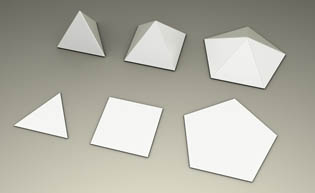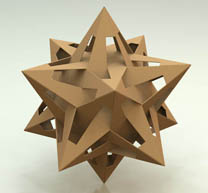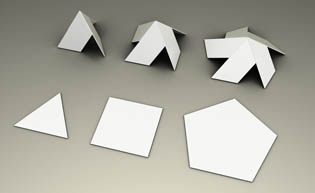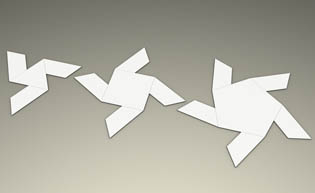Abstract
In their book “La Divina Proportione”, Luca Pacioli and Leonardo da Vinci described and illustrated an operation which you can apply to a polyhedron, called Elevation. In this paper I want to show how you can make models of these elevations from simple elements, material that can be used for workshops. Luca Pacioli and Leonardo da Vinci applied the elevation operation only to polyhedra, but the concept can also be applied at 2D tiling patterns, resulting in interesting single and double weaving patterns.
1. Introduction
1.1. Elevation. In La Divina Proportione [1] by Luca Pacioli and Leonardo da Vinci, an interesting new concept that can be applied on polyhedra is introduced. The concept of Elevation that they introduced was also the subject of my paper for Bridges in 2014 [2], in which the difference between Elevation and Stellation was explained.

Figure 1: Elevated Cube


Figure 2: Elevation of triangle, square and pentagon.
Figure 3: Escher's star.


Figure 4: Developing the elements for the models of the elevated polyhedra.